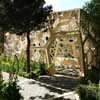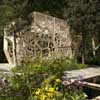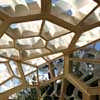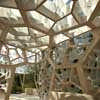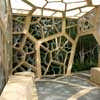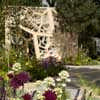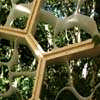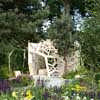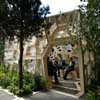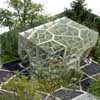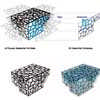Eureka Pavilion London, Chelsea Flower Show Design, NEX Architects
Eureka Pavilion, London : Chelsea Flower Show Building
Eureka Pavilion Kew, southwest London design by NEX, UK
15 Jun 2011
Eureka Pavilion London – Chelsea Flower Show Structure
Design: NEX
The Times Eureka Pavilion
The pavilion has now been moved from Chelsea to Kew Garden – it will be open to the public soon.
NEX and Buro Happold complete innovative ‘bio-mimicry’ design for The Times Eureka Pavilion at Chelsea Flower Show.
NEX was delighted to contribute to creating a benchmark in integrated design at this year’s RHS Chelsea Flower Show (24 May – 28 May) working with Buro Happold and Chelsea Gold Medallist Marcus Barnett on the creation of a pavilion for The Times Eureka Garden, in association with the Royal Botanic Gardens, Kew.
The Times commissioned Marcus Barnett Landscape Architects to design and build the garden demonstrating a commitment to science and reflecting the focus of The Times monthly science magazine, Eureka. Barnett asked award-winning NEX Architecture to design the Eureka Pavilion, and appointed Buro Happold to provide structural engineering. Plant species chosen for the Eureka Garden reflect their benefits to society including medicinal, commercial and industrial uses underlining the fact we could not survive without them. The pavilion design brief was to reflect the same theme.
NEX Principal Alan Dempsey says: “We extended the design concepts of the garden by looking closely at the cellular structure of plants and their processes of growth to inform the design’s development. The final structure was designed using computer algorithms that mimic natural growth and is intended to allow visitors to experience the patterns of biological structure at an unfamiliar scale. The primary structure is timber sourced from sustainable spruce forests with a glass panelled roof.”
The design development of the pavilion focused on the ‘bio-mimicry’ of leaf capillaries being embedded in the walls. The structural geometry was finalised to use primary timber capillaries (300dp x 140wd) to form the basic shape and supporting structure of the pavilion, inset with secondary timber cassettes that hold the cladding. Following completion of the 3D modelling to meet architectural and structural needs, specialist timber fabricators undertook detailed analysis and digital manufacturing of the structure.
The walls and roof are clad with recycled plastic ‘cells’ that frame views out to the garden. Rain water literally runs down the capillaries in the walls of the cube from the roof into the ground. The pavilion sits on a timber raft constructed from spruce beams. Sand ballast fills the voids between the raft timbers to give the pavilion increased weight to resist uplift from wind loads.
Nothing will remain in the ground after the structure is dismantled and transported to the Royal Botanical Gardens at Kew where it will be erected along with the rest of the Times Eureka Garden, against the backdrop of Kew’s historical UNESCO World Heritage Site landscape. It is hoped the garden will be open to the public from early July for the summer months.
The Times Eureka Pavilion – Building Information
PROJECT: Times Eureka Pavilion
LOCATION: London UK
KEY DATES: RHS Chelsea opening 22 May 2011 Kew Gardens opening Jul – December 2011
CLIENT: The London Times / Royal Botanic Gardens at Kew
ARCHITECT TEAM: NEX – Alan Dempsey, Paul Loh, Michal Piasecki, Tomasz Starczewski, James Chung
COLLABORATORS:
Marcus Barnett Landscape Design
Buro Happold Engineering
NEX – The Times Eureka Pavilion Designer
NEX is a London based multidisciplinary design office that works at the intersection of design, architecture, and urban infrastructure. The office aims to combine a radical design approach with the pragmatics of real world constraints to create transformational outcomes for their clients. Their completed work has received a number of awards including a LEAF award for Spencer Dock Bridge, and a D&AD pencil for the [C]space DRL10 Pavilion.
NEX work across multiple sectors in the UK and Europe and past clients have included the Architectural Association, Facebook, Established & Sons, and the RPA and DDDA. Current work includes the refurbishment and extension of a large retail centre in a Grade 1 listed Georgian building, a pedestrian bridge, private residential projects, and bespoke and limited edition furniture.
Alan Dempsey M.Arch. Dip. Arch. BSc.Arch. RIBA. ARB
Alan is founding director of NEX. In 2010, he was selected by the European Centre for Architecture and Chicago Athenaeum as one of the 40 most significant architects under 40 in the EU.
Alan is a chartered architect in the UK and has previously worked with Future Systems, OCEAN and Farjadi Architects. He has over 12 years of professional experience in multiple sectors including commercial, cultural and public, residential, educational and infrastructural projects in the UK and Europe.
Alan studied at the Dublin Institute of Technology, Universidad de los Andes, Bogota and the Design Research Lab at the Architectural Association in London, where he graduated with a thesis distinction in 2002. He is a Director of the Independents’ Research Programme at the Architectural Association, a global network that facilitates research on the use of computational design and fabrication to enable innovative forms of design practice.
Alan’s work has been widely published in the in the US, Europe and Asia, and was selected to represent the UK at the Beijing Architecture Biennale in 2008. He is the editor of two books published by the AA press in 2010/11: Nine problems in the form of a pavilion, which documents his first completed project.
He has been invited to speak about his work internationally, most notably at the ETH in Zurich, Central Academy of Fine Art in Beijing and the NAI in Rotterdam. His completed work as received a number of awards including a LEAF award for Spencer Dock Bridge, and a D&AD pencil for the [C]space DRL10 Pavilion. In 2008, he was selected by the British Council as one of the six most significant Design Entrepreneurs in the UK.
Eureka Pavilion London images / information from NEX
Location: Royal Botanic Gardens, Kew, south west London, England, UK
London Buildings
Contemporary London Architecture
London Architecture Designs – chronological list
London Architecture Tours by e-architect
Chelsea Building Designs
Chelsea Academy
Feilden Clegg Bradley Studios
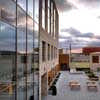
image from architect
Chelsea Academy Building
Chelsea Barracks masterplan
Rogers Stirk Harbour + Partners
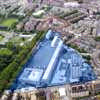
picture from architects
Chelsea Harbour Design Centre
Duggan Morris Architects
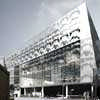
picture from architects
Michelin House Redevelopment
Design: Conran Roche
Peter Jones
William Crabtree
Stamford Bridge – football stadium
One Hyde Park, Knightsbridge
Rogers Stirk Harbour + Partners
Comments / photos for the Eureka Pavilion page welcome

